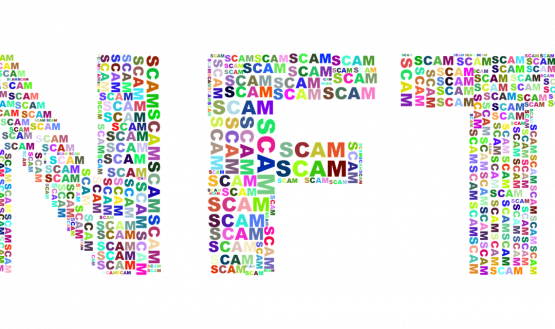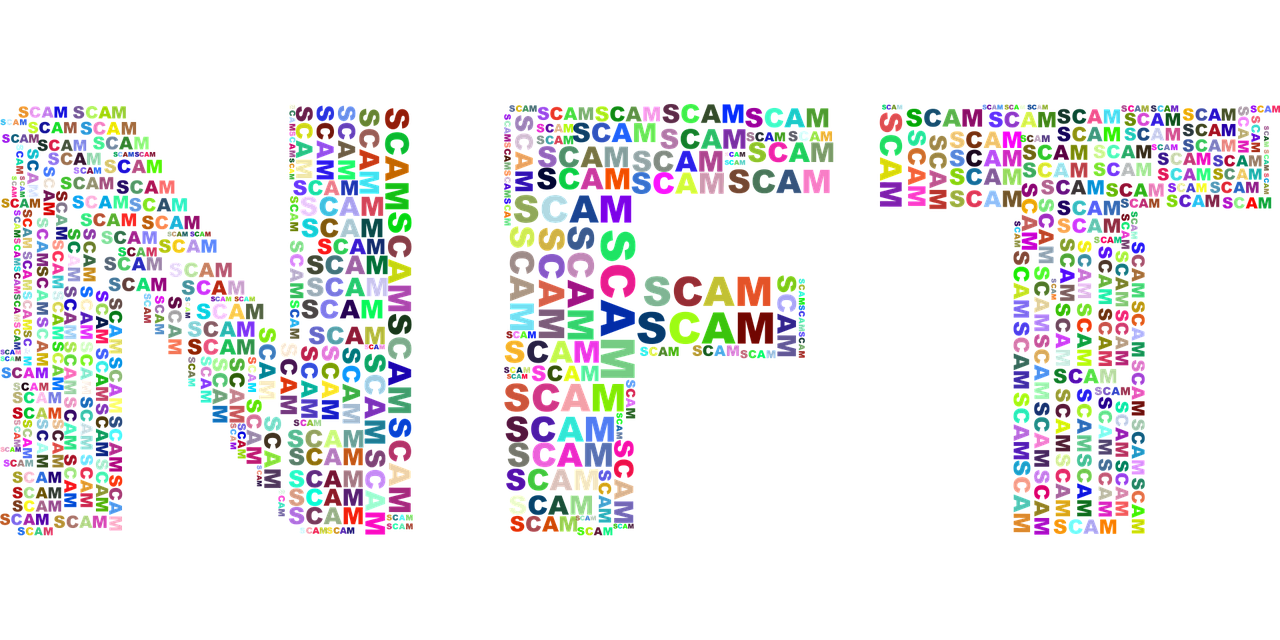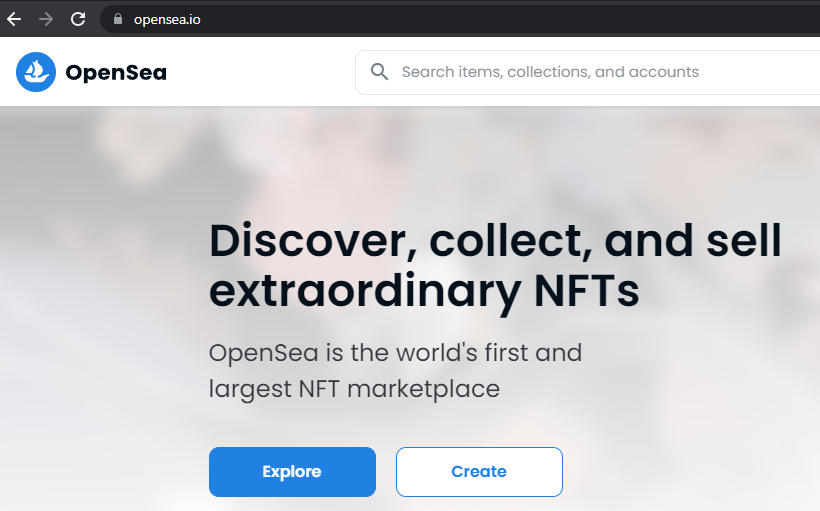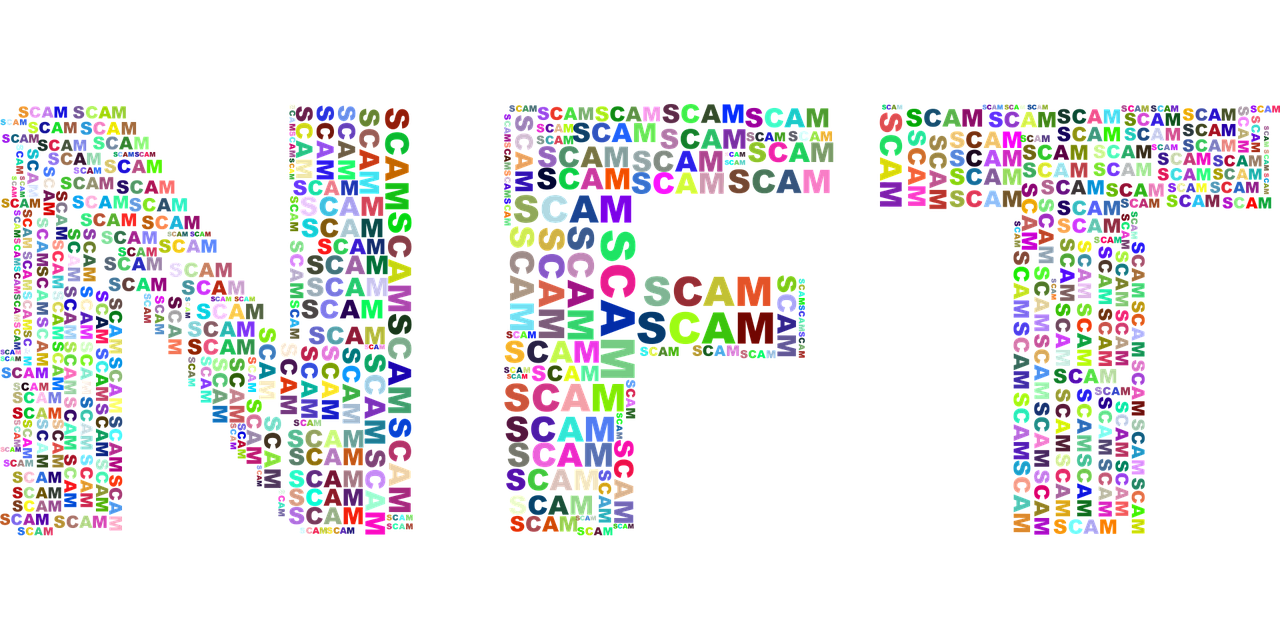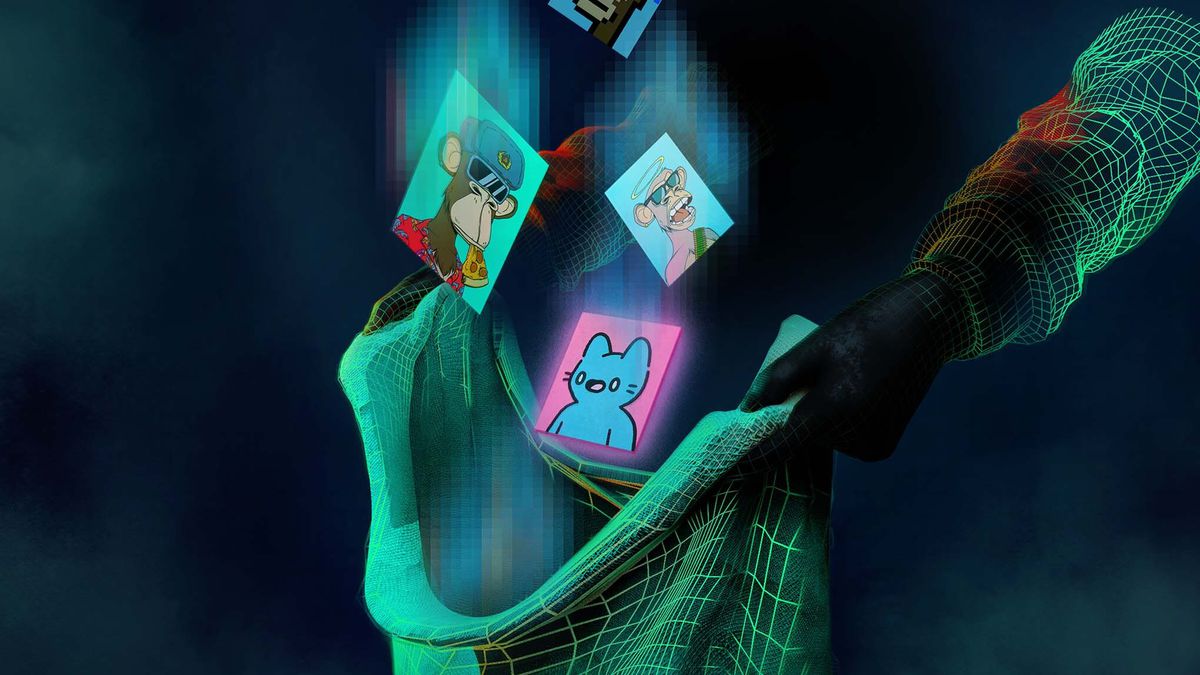Non-fungible tokens (NFTs) saw mainstream adoption in 2021 with funds pouring into the emerging asset class space in record amounts, and that continues in 2024. Though many art-enthusiasts are thrilled about NFTs, the scene has also become a new target of many scammers.
This should not deter you from investing in NFTs, as you can easily learn how to detect NFT scams and avoid them. In this guide we’ll cover the most common NFT scams and how they work.
Types of NFT Scams
- Fake NFT websites
- Pump and dumps / rug pulls
- Fake offers
- Customer support imposters
- Plagiarism
- Airdrop scams / giveaways
- Bidding scams
Stick to regulated platforms like eToro when you buy Ethereum to purchase NFTs, and read our list of NFT marketplaces that have a good reputation.
Your capital is at risk
Are NFTs Themselves a Scam?
NFTs are not a scam; they are just ‘unique cryptographic tokens stored on a blockchain’ that could not be replicated. These cryptographic assets on the blockchain enable your digital work to distinguish from other artworks.
Any digital object that has been “minted” or placed on the blockchain as a token can become an NFT. They are similar to trading cards, except the card is digital and points to the URL of a JPEG.
Through these non-fungible tokens, you can tokenize your real-world tangible assets on the blockchain, and sell them to other users for a significant amount. This is why NFTs are not a scam. They are genuine tokens that serve as digital ownership certificates. NFTs have a wide range of applications and can be extremely valuable.
For investors that truly understand the purpose of NFT technology, NFTs are actually a good investment. Unfortunately, NFT scams do occur, as do Bitcoin scams and many types of crypto scams in general. Before committing to purchase any NFT, potential buyers should carefully examine the seller and platform they are using.
What are the most common NFT Scams
Financial prosperity creates opportunities, but it also creates problems. NFT frauds are dangerous and hard to spot, a side effect of the exploding interest of people in blockchain and NFTs. Below are the most common NFT scams faced by the NFT buyers and sellers:
Fake NFT websites
The growing NFT market is flooded with many websites and marketplaces catering to the needs of NFT collectors. The presence of multiple websites has made it difficult for users to figure out whether an NFT trading website is real.
Legitimate website with padlock symbol by domain name
If you are looking for some best NFTs to buy, the first step is to figure out where you can buy and sell NFTs. You may encounter various fake NFT trading websites if you go for purchasing or selling from the online medium. It can be difficult to distinguish between genuine and fraudulent websites because they frequently look identical.
Check the domain is correct and has the padlock symbol to indicate it is a secure HTTPs encrypted domain, with an SSL certificate. Instead of clicking links sent to you by others or in emails, find websites by searching their domain name in Google (although don’t click sponsored results marked ‘ad’). Bookmark sites you visit a lot.
You could lose money buying NFTs from scam websites as there are no legitimate NFTs offered on them. Also scammers will keep a record of the sensitive information that you have entered while making your purchase. Though a user only needs to furnish his MetaMask wallet address while making any NFT transaction, he may be asked by the website to provide his master key to the Ethereum wallet to hack his wallet and steal all his crypto coins.
How to avoid making transactions on fake NFT websites?
To avoid getting navigated to the fake trading websites, ensure that the NFT’s contact information matches the information on its creator’s website. You can also make use of the online tools line ScamAdviser and Trend Micro Check to check whether the NFT website is genuine or not.
It is also advised not to provide any sensitive information on pop-ups on any NFT website. Choosing legitimate NFT trading websites is the simplest way to stay safe. Always select well-known NFT marketplaces like OpenSea, NBA Top Shot, Axie Infinity, Zora for making your NFT purchase or sale.
NFT pump-and-dump schemes
Pump-and-dumps are common scams that have sprung up with the growing interest in cryptocurrency. Pump-and-dumps occur when a group purchases NFTs or currency to increase demand artificially. When they succeed, the scammers sell their assets when prices rise, leaving others with worthless assets.
Also known as ‘rug pulls’, scammers promote a new NFT project to attract attention and entice investors to participate in the NFT project. The price rises as more people purchase the NFTs.
As soon as the price rises, the scammers cash out and withdraw their money from circulation, abandoning NFT holders with almost no assets – pulling the rug out from under them. This unethical practice has been seen in many NFT projects.
The Athletic, for example, claimed that members of SoRare NFTs football teams purchased the NFTs for hiking purposes. The staggering sale of Beeple’s digital work was also called into question.
How to avoid NFT rug pulls?
As a prudent buyer, you must always look at the history and wallet record of the NFT project before you invest in it. You can see the total number of transactions and buyers who have purchased NFT collections on OpenSea and any other NFT marketplace. Similarly, EtherScan displays all transactions on the Ethereum blockchain.
You can also do some background research on the NFT project by going through the official accounts of the project on various social media platforms. Before you put any money into the project, you must connect with other investors on social media. A good NFT project would have a large number of investors and collectors.
Fake offers
Sometimes, scammers under the name of famous NFT trading platforms will contact you with their fake emails and tell you that someone has made an offer for your digital art. You will be required to click on a link for some more information, and in case you tap on the link, you will be taken to a phishing website.
The bogus website will request you submit your wallet details and link them with the website. Then, you will be required to provide your seed phrase/recovery phrase for next steps.
If you provide your seed phrase, scammers will have access to the sensitive information of your wallet, and they will use them to hack your wallet address and steal your crypto coins from it.
How to avoid fake offers?
To avoid any fake offer, always check the verification mark provided to the seller. Many genuine NFT selles are supplied with a blue checkmark beside their usernames, and their collection’s properties are also clearly listed.
Ensure that the artist’s profile has a blue checkmark next to its picture on OpenSea or other NFT marketplaces. In case you are not able to find it, then contact the artist on social media platforms like Twitter or Instagram, or you can directly reach out to him through his website.
Once you contact the artist, inquire directly with him if the artwork you want to purchase is theirs and if he has the appropriate user profile. As usual, if you are navigated to any website to avail of that offer, it is advised not to provide any sensitive information to the website.
Fake NFT support
Apart from fake NFT offers, scammers also provide fake customer support or technical services to trick NFT users. Scammers generally approach new NFT users under the guise of technical support staff through social media or messaging platforms such as Discord.
They misrepresent themselves as employees of some well-known NFT marketplaces such as OpenSea and attempt to persuade you to provide the seed phrase/recovery phrase of your crypto wallet.
They could request you to share your screen and get your wallet’s credentials from it. Scammers could even provide you with the link to a fake website to get your sensitive information.
You may also come across some bogus MetaMask security alert emails, claiming that your MetaMask wallet will be suspended due to security concerns. To retrieve your wallet, you must first verify your account by clicking on the link provided in the email.
The landing site will ask for the seed phrase of your crypto wallet. If you provide your seed phrase, scammers will gain access to your wallet’s sensitive information, which they will use to hack your wallet address and steal your crypto assets.
How to avoid fake NFT support?
If you need technical assistance after purchasing an NFT, you must contact the NFT marketplace’s official customer service. Sharing your wallet credentials even with an authorized staff of the NFT marketplace can land you in big trouble. So you must avoid doing that.
Also, most NFT projects will not communicate with users directly via Discord or Telegram. So, be careful if you get any messages related to technical support from any member of the project.
Plagiarized NFTs
News article discussing NFT plagiarism
Nowadays, artists claim that plagiarised NFTs are wreaking havoc on their communities. Recently, the marketplace that sold the NFT of Jack Dorsey’s first tweet for million dollars has stopped transactions on its platform as people were selling NFTs of contents which did not belong to them.
Many artists have complained that their work has been copied from DeviantArt, a renowned art community with more than 70 million members and 500,000 works of art. These artists claim to have been victims of NFT theft.
To curb rampant plagiarism in the NFT space, DeviantArt has introduced state-of-the-art image recognition software for scanning public blockchains and third-party marketplaces. It warns its members about potential art fraud. It has sent over 50,000 alerts about potential NFT violations since August 2021.
How to avoid plagiarised NFTs?
You can use image recognition software for scanning public blockchains and third-party marketplaces. Ensure that the seller has all property rights over the artwork before you make any purchase. Ensure complete due diligence on your part before you pour your money into the project.
Fake giveaways
Scammers frequently pose as employees from an NFT marketplace and offer a lucrative bogus giveaway or airdrop under the pretense of promoting a project. The vast majority of NFT airdrops and crypto airdrops that take place on websites are scams.
They request you to provide your wallet credentials on the website – which they set up – so that they can provide you with a free asset on your purchase (they claim). If you sign up and reveal your credentials to them, you will lose your entire cryptocurrency holdings in your wallet.
Similarly, scammers could also contact you through any social media platforms and promise you free NFTs if you propagate the giveaway messages and sign up for the campaigns. They give you the link to their phishing websites to steal the private keys to your cryptos after hacking your Metamask wallet.
Real, legitimate airdrops (which are rare) take place on an actual exchange – you are airdropped crypto to your exchange account balance, for example eToro, Coinbase and Huobi users have received airdrops for Songbird, Flare token, etc. in the past. Avoid random websites though, even if they sound convincing.
How to avoid fake giveaways?
Make sure you keep in mind the adage, “If it sounds too good to be true, it probably is.” Always conduct your background research on the entity or person providing the giveaways. You should also never open any attachments or links from unknown sources, even if they offer you a lucrative bogus giveaway.
Bidding scams
Outbidding scams have plagued the NFT market. These scams generally happen when a user has already purchased an NFT and wishes to resell it. Once your NFT has been listed for sale, bidders may seek to change the cryptocurrency used.
In other words, the potential buyer for your NFT may secretly switch the cryptocurrency you listed as your desired medium of exchange to another cryptocurrency with a lower value.
You may have specified Ether as the currency in exchange for the NFT, but the potential buyer may shift it to ADA, which has a smaller value when converted into typical fiat. In case you come across any such instance, consider it as a warning sign! Of course, $10 will not be the same as 10 BTC.
How to avoid bidding scams?
You have to check the currency carefully you want to trade your NFT with. You should also not agree to a lower bid than what you are looking for.
Conclusion
These are just a few examples of the various types of NFT frauds on the internet. Though there are specific steps you can take to avoid being a victim of a scam, the best advice is to do your background research before investing in any NFT project.
Scammers are well aware of how many people hope to get rich – Bitcoin scams and other crypto scams are also common. They prey on these instincts and employ a variety of deceptions to profit from those involved in the NFT space. You can, without a doubt, avoid scams. Always exercise caution.
Make sure you keep your wallet credentials safe and do not share your seed phrase (recovery phrase) with anyone. These little security steps on your part will provide you with a scam-free experience in the NFT space.
